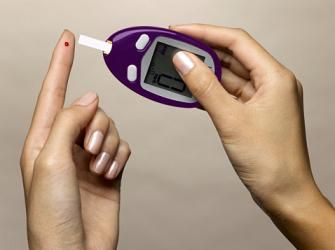Any form of diabetes undetected in time may give severe complications for the body. It is therefore important that this disease is diagnosed early in order to be treated properly. Diabetes is characterized by increasing blood glucose (hyperglycaemia).
What is diabetes?
The disease is installed when the pancreas does not produce enough insulin or when the body can not effectively use its produced insulin. To enter the cells where it is used as fuel, glucose needs insulin – hormone secreted by the pancreas. When the body does not have the hormone or when he can not use it to convert glucose into energy, to install the disease.
There are several types of diabetes: type 1 diabetes mellitus (insulin-dependent), type 2 diabetes (noninsulino-dependent diabetes), gestational diabetes, secondary diabetes caused by certain endocrine diseases (such as pancreatitis, for example), diabetes insipidus (excretion of large amounts of very dilute urine), etc..
6 steps to recognize diabetes:
Step 1. Type 2 diabetes is most common form of the disease. Approximately 90% of diabetics suffer from this type of diabetes. Generally affects people with ages over 45 years, but lately becoming more youth. Their body can not effectively use its own insulin.
Type 2 diabetes is a genetic disorder and some people are considered at high risk of disease: obesity, sedentary. Unfortunately, this type of diabetes is very difficult to detect.
Step 2. Type 1 diabetes (pancreas that produce insulin in a manner insufficient) is a less common form. It affects about 10% of cases. People with type 1 diabetes in particular children and young people (and is also called juvenile diabetes). The disease involves an injection of insulin treatment, the patient can not survive otherwise. Type 1 diabetes is not hereditary.
Step 3. Gestational diabetes is hyperglycemia first detected during pregnancy. Due to reduced disease manifestation, as in type 2 diabetes, gestational diabetes is more likely detected in prenatal health checks.
Step 4. Signs that can alert you about this disease are: very thirsty during the night, tiredness, physical weakness, increasing the amount of urine and urinary frequency. In type 2 diabetes symptoms are less pronounced. Therefore, most people that get the disease is diagnosed after several years of its occurrence, when there are already many complications.
Step 5. After onset, the patient shows symptoms such as reduce vision, slow healing wounds, repeated urinary infections and skin and difficult to treat.
Step 6. Persons older than 45 years have increased risk of illness (those who have a family 2 diabetic, hypertensive women with gestational diabetes, obese) should check their blood glucose every 3 years to see if this is in the normal range (higher threshold 110mg/dl).
Common risks of diabetes:
In the long term, diabetes can cause heart disease, blood vessels problems, and can affect eyes, kidneys and nerves.
– Diabetic retinopathy: is one of the important causes of blindness and is caused by damage to blood vessels in the retina (vitreous hemorrhage in copra). Shows in 90% of diabetics, eye diseases of varying degrees, some of them completely losing their sight;
– Diabetic neuropathy: Nerve damage is caused by diabetes, which affect about 50% of diabetics. Common symptoms of this disease are tingling and pain in hands and feet, weakness of the body so strong. Associated with poor blood circulation, increases the risk of neuropathic foot ulcers and can even require amputation of the limb sick.
– Renal: 10-20% of diabetics die from a kidney failure;
– Heart disease and stroke.

